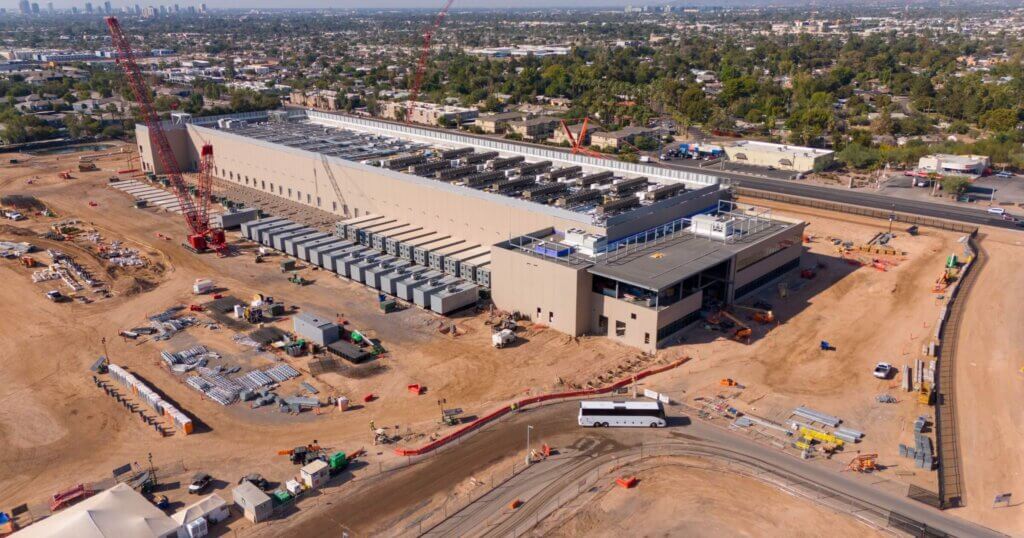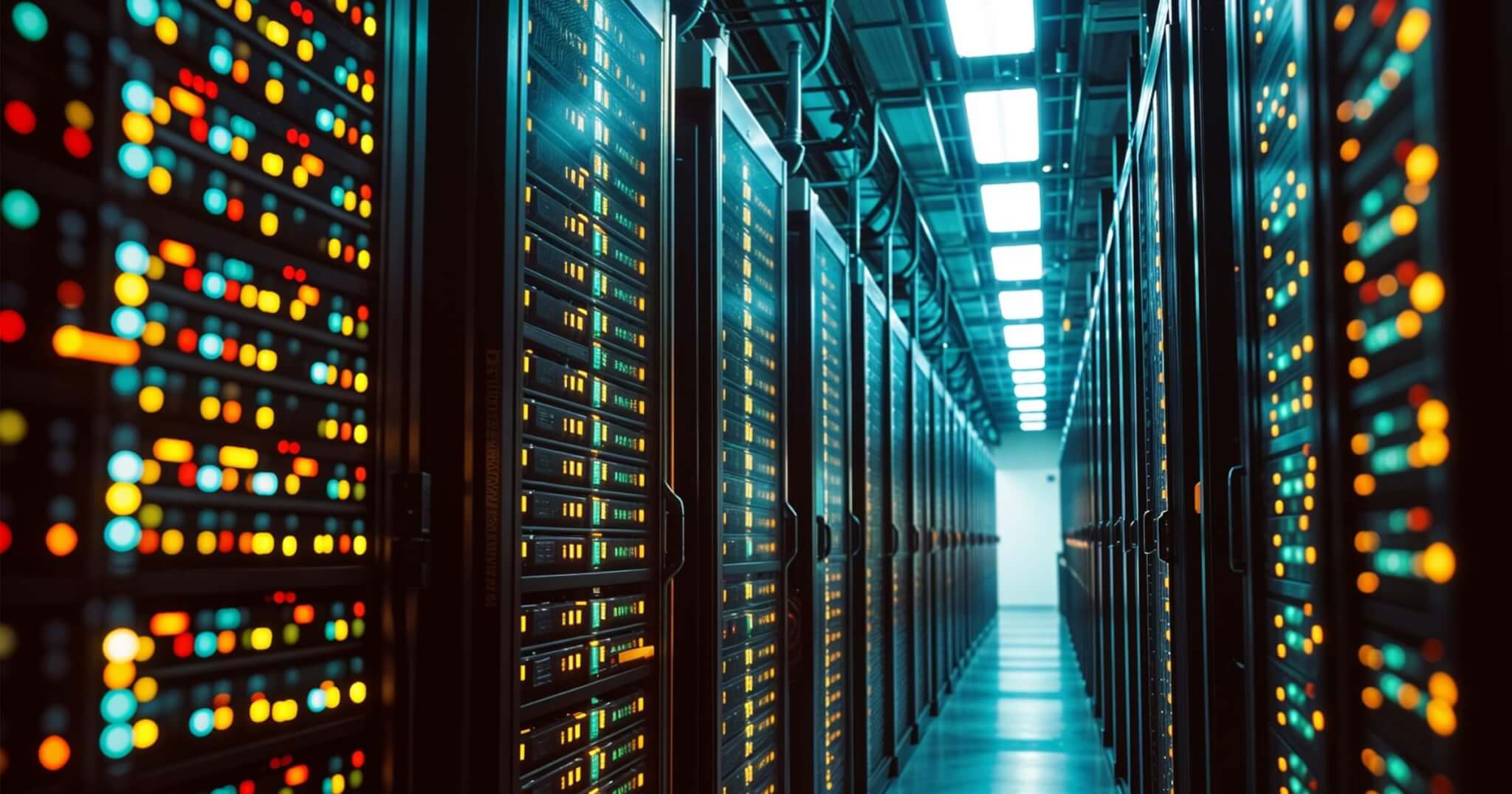AI training. Cloud storage. Streaming. Global commerce. These needs are all powered by servers, and the world can’t seem to get enough of them. Data center demand is growing fast, but the industry is facing severe bottlenecks. Yet developers continue to break ground on hyperscale projects, racing to meet capacity targets in 2025 and beyond. To understand what’s going on behind the scenes, we break down why data center demand remains strong, what’s holding up delivery, and what construction firms need to know to stay competitive in this space.
The global surge in data center demand
Hyperscale cloud growth, AI workloads, and edge computing are pushing developers to scale up fast. According to SEIA, the U.S. saw over 1.6 gigawatts of absorption in 2023 alone, with another 3.5+ gigawatts in the development pipeline. Vacancy rates in major U.S. markets hit record lows, often below 2%. CBRE reports that most markets are seeing over 80% of new builds pre-leased, often before construction even starts. That means demand is far outpacing what’s being delivered.
At the same time, investor appetite is heating up. Blackstone and Brookfield are backing billions in new development. Private equity is chasing hyperscale projects as stable long-term investments, often targeting power-dense campuses near cloud regions.
This data center demand isn’t limited to the United States alone. Dublin, London, Frankfurt, and Amsterdam (the “FLAP-D” markets in Europe) are seeing similar trends. In Asia, Singapore and Tokyo are tightly constrained, pushing development toward emerging hubs like Johor and Osaka.
By 2030, global capacity is expected to double, or even triple in some regions. But developers are running into one major wall: power.

QTS Data center under construction in Phoenix, Arizona. Photo courtesy of Shutterstock.
The factors affecting data center construction
Power constraints
Power is now the biggest hurdle for new data center builds. In Northern Virginia, the largest data center market in the world, Dominion Energy has warned of multi-year delays in connecting new projects. The grid can’t keep up with the speed and volume of requests.
AI is part of the issue. Training large language models requires far more energy than traditional cloud workloads. According to the International Energy Agency, power usage per rack has jumped from an average of 5-10 kW to over 40 kW in some cases—especially where GPUs are packed densely for AI applications.
In Dublin, the Irish government temporarily halted new data center connections in 2022 due to grid strain. Power in that region is being rationed, and new facilities must now prove they use renewable sources or include on-site generation to even be considered.
Los Angeles, Silicon Valley, and New York are seeing similar backlogs. In many metro areas, new transmission lines can take seven to ten years to build, according to NetworkWorld. That’s a huge mismatch when clients are signing multi-year AI compute contracts now.
For construction firms, this means delays are often tied not to site prep or labor, but whether the utility can deliver megawatts when needed.
Supply chain and construction delays
Alongside power issues, supply bottlenecks are hitting core equipment. Lead times for large-scale transformers are as long as two years in some regions. Backup generators, switchgear, and cooling units are also delayed, driving up costs.
According to a June 2024 report from Data Center Knowledge, backup power gear remains the most problematic, followed closely by custom components for high-density AI racks. Some developers are stockpiling transformers years in advance or partnering directly with OEMs to secure inventory before sites are even fully designed.
That said, supply chain pressures are easing for some basic IT gear. Servers, routers, and storage arrays are no longer facing the chip shortages seen in 2022 and 2023. However, specialty items like AI-optimized GPUs or immersion cooling systems remain backordered and expensive.
Regional bottlenecks and emerging markets
The most established data center hubs are running out of room. That’s opening up new opportunities in second-tier markets.
In the U.S., developers are expanding into areas like:
- Atlanta – abundant land and more straightforward permitting
- Phoenix – good fiber connectivity and access to solar
- Portland – hydro power and tax incentives
- Salt Lake City – proximity to the West Coast without the grid congestion
Europe is seeing a similar shift in data center demand. FLAP-D is still dominant, but projects are now pushing into the Nordics (Sweden, Norway, Finland), where renewable energy is cheap and land is more available. South Korea, Malaysia, and India are also emerging hotspots in Asia, especially for edge and colocation builds.
One example is Microsoft’s recent announcement of a multi-region campus in Madrid, moving away from saturated Amsterdam. Google and Meta are following similar patterns to hedge against local grid and permitting delays.
As power and space constraints continue to shape where facilities can be built, construction firms that are active in emerging markets are winning bids over firms that rely on traditional hotspots.
How the industry is adapting
To stay ahead of the bottlenecks, data center operators and their construction partners are shifting how they work. A few strategies gaining traction include:
1. Early procurement
Builders are ordering electrical gear, chillers, and generators during early design phases to lock in delivery slots. Some are entering long-term contracts with suppliers or co-investing in manufacturing capacity.
2. Modular and phased builds
Instead of waiting for full-scale completion, developers are rolling out smaller, prefabricated sections (2-5 MW blocks) to start earning revenue while construction continues. This staged approach is especially popular in sites with uncertain power timelines.
3. On-site power generation
Solar panels, fuel cells, and lithium battery banks are being deployed to reduce grid reliance and get projects approved. In California and Japan, battery-based microgrids are being used as primary or hybrid sources of backup power.
4. Partnering with utilities
Some hyperscalers are now funding local grid upgrades in exchange for priority connections. Others are working directly with utility companies during early planning to align timelines and avoid last-minute surprises.
5. Talent development
Data center construction requires specific skills, like commissioning engineers, HVAC specialists, and low-voltage installers. Firms are building in-house training programs or partnering with trade schools to secure talent for multi-site rollouts.
These shifts are now mandatory if firms want to compete in a space where schedules are tight, clients demand high uptime, and every delay has a financial cost.
What the future holds for data center builders
Data center demand is accelerating due to the AI boom and the push for decentralized computing. For contractors specializing in data center construction, this represents a huge opportunity. Builders that can deliver data centers without cutting corners will have a long runway of work ahead and plenty of contracts to bid on.
Want to keep up with AI-driven construction trends? Check out our recent articles:
- Data center construction projects underway in 2025
- DeepSeek AI boosts data center construction
- Edged Energy breaks ground on eco-friendly data center in Arizona
Get more insights like this on construction trends and project opportunities by subscribing to the Under the Hard Hat newsletter, and stay informed on everything shaping the future of architecture, engineering, and construction.



1 comment